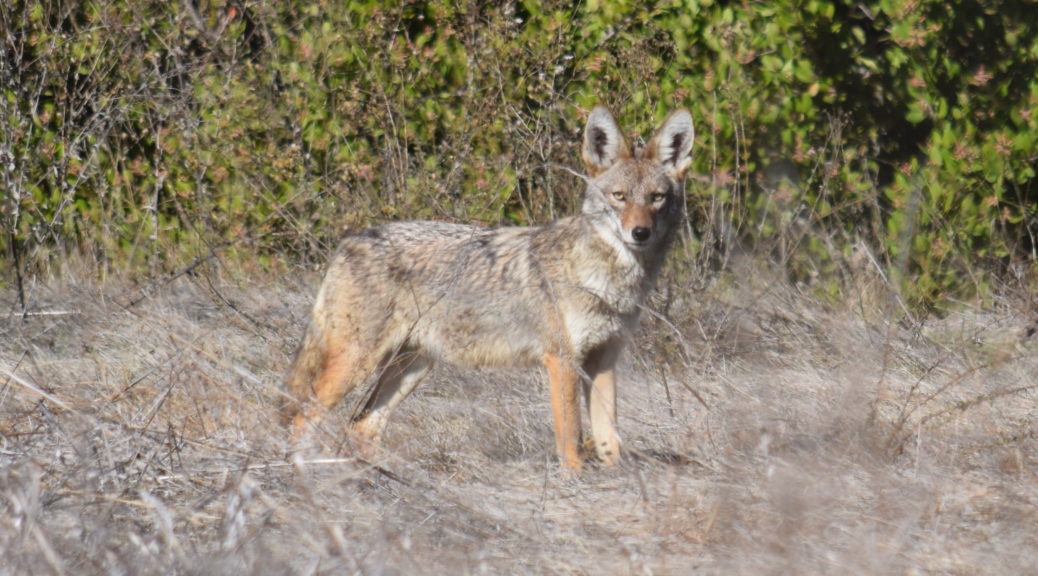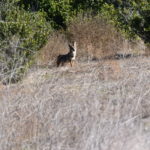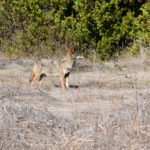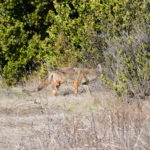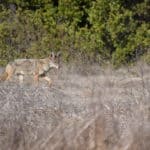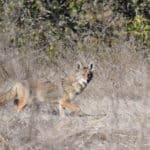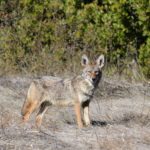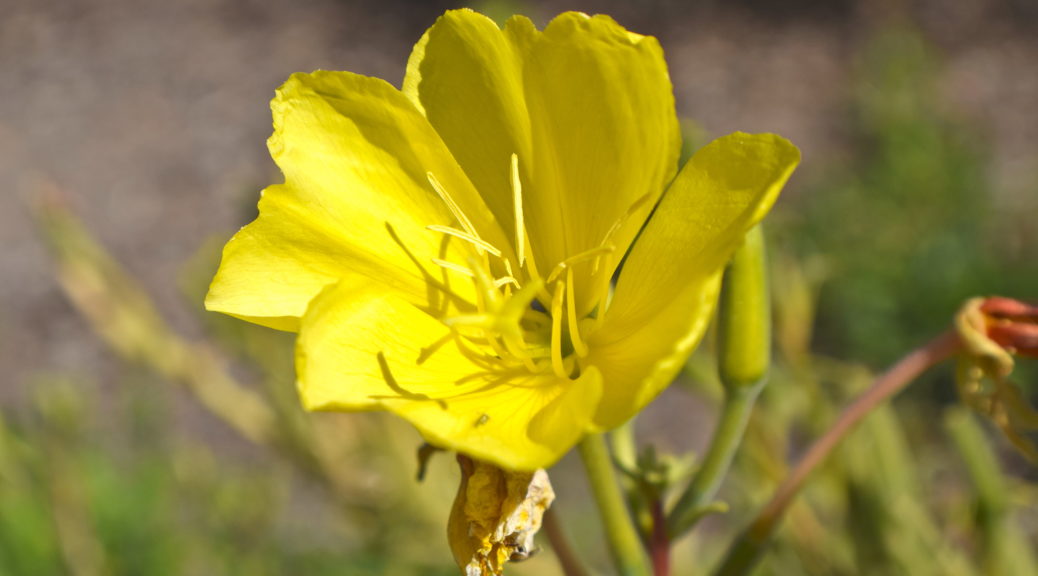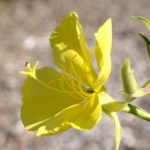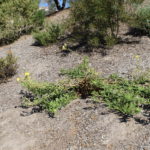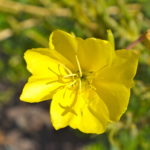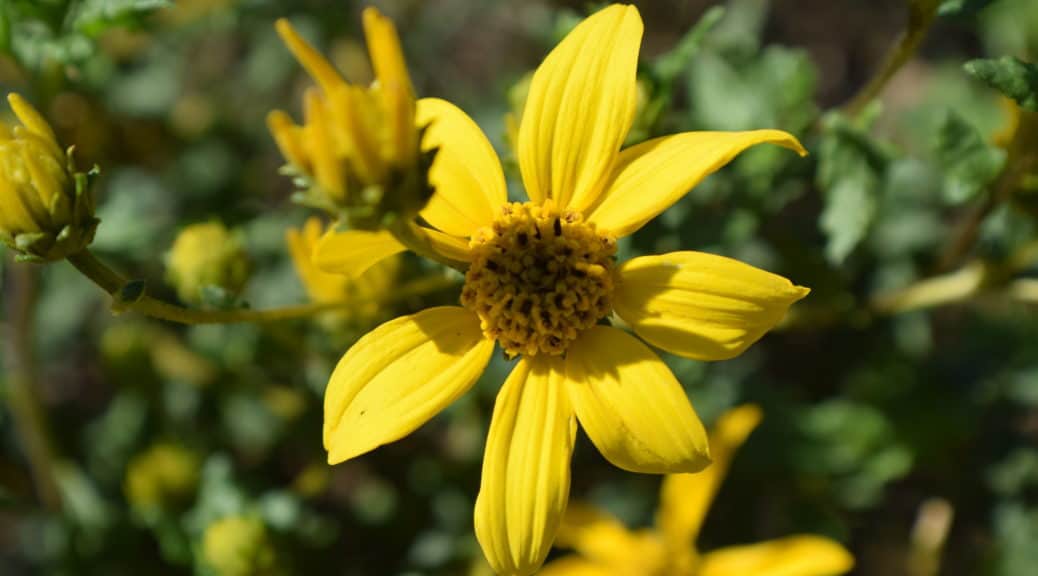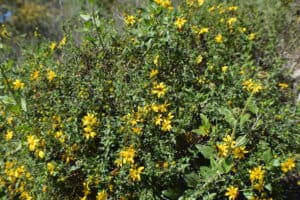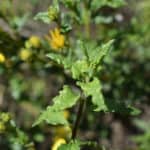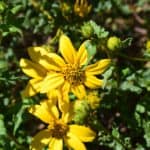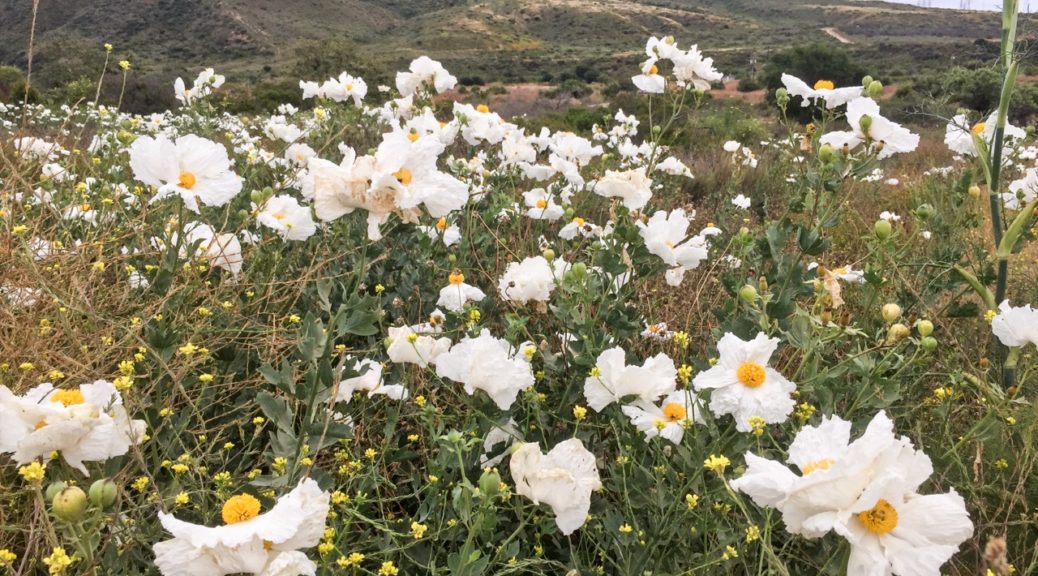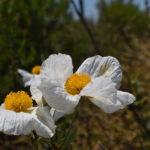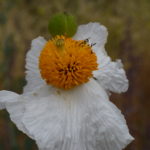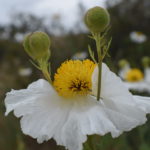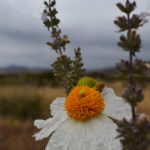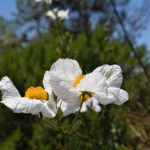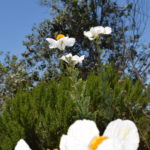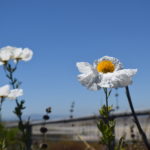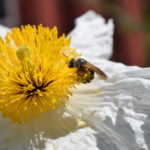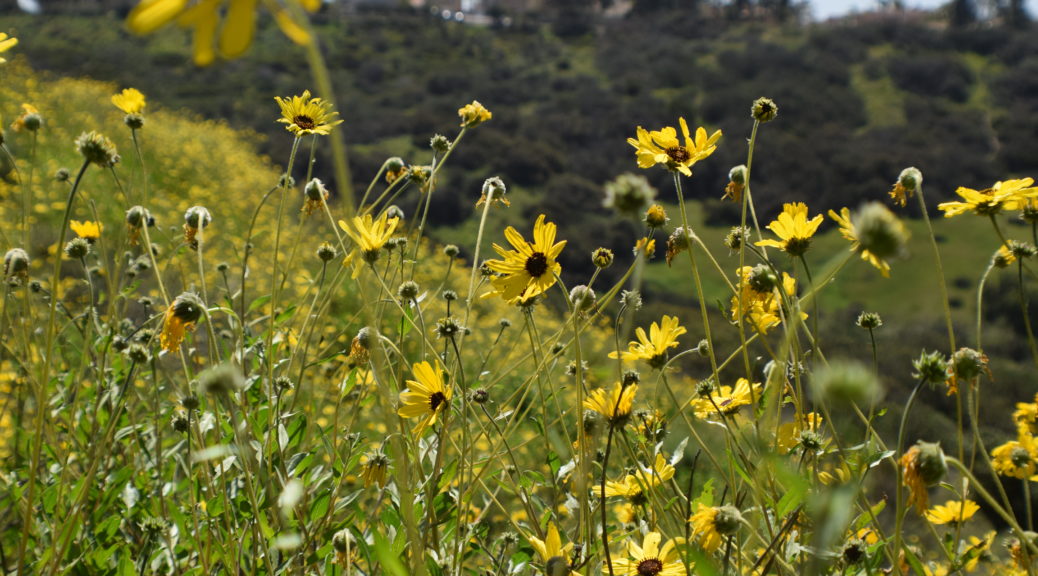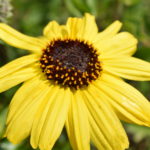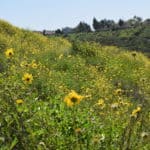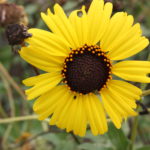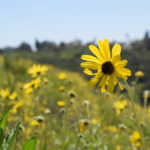As humans keep encroaching and building into more of our open spaces, coyotes are adapting to find food in urban areas. I took this photo of a coyote in Rice Canyon Open Space Preserve. She is predominantly light gray and fulvous (dull orange, brownish-yellow in color), interspersed with black and white. The Kumeyaay name for coyote is hatpaa.
Images
Oenothera elata ssp. hookeri ‘Marsh Evening Primrose’
Oenothera elata ssp. hookeri perennial herb grows along the coast from San Francisco to San Diego. It grows in an upright form to a height of 5 feet. Flowers are yellow; leaves are medium green and deciduous. Its form may be either upright or sprawling.
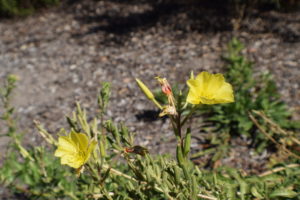
Native Americans used both root and leaves for diuretic function, sedative and laxative effect and to soothe both skeletal and muscle pain.
Bahiopsis laciniata ‘San Diego Sunflower’
This evergreen shrub is a native plant of the Aster family, and with its multi-branched and crinkled light green leaves that produce large quantities of bright yellow flowers; San Diego Sunflower is restricted to coastal southern California and northern Baja.
It is very floriferous and blooms most of the year. It is known by the common names such as San Diego Sunflower and Tornleaf Goldeneye. It’s native to the dry mesas, canyons and mountain slopes and is part of chaparral and coastal sage scrub communities.
Romneya coulteri ‘Matilija Poppy’
During one of my visits to the Vernal Pool Restoration Project on Proctor Valley Road, as I was driving I noticed in the distance a garland of flowers protruding over one of the many Laurel Sumacs near the dry wash. There stood a large perennial that served up a generous portion of large, crepe paper-like white flowers with showy yellow stamens, which looks like a fried egg-plant.
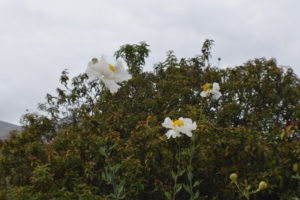
The flower is lightly scented with 8-9 inch wide blooms festooning the upper reaches of stout with glabrous stems cloaked in irregularly lobed gray-green leaves, this shrub is tough-as-nails and spreads by vigorous rhizomes, Romneya coulteri likes sun and good drainage; in heavy soils it can be difficult to establish. Matilija Poppy can be found in dry washes and canyons away from the immediate coast and in communities located in chaparral, coastal sage scrub between 1000 and 4,000 feet.
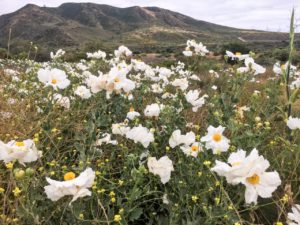
In 1890 this California wildflower was often called the “fried-egg poppy,” and was a nominee for the honor of the California state flower, but came in second to the California poppy, Eschscholzia californica.
Matilija poppy is said to be named after Chief Matilija of the Chumash Indian Tribe.
In the stalk of the flower, there is a clear to yellowish liquid substance that the Cahuilla Indians used to drink.
The Native Chumash Indians valued the plant for its medicinal value as well. The plant was used medicinally for skin and gum problems and stomach upset. The folklore of the the Chumash people believed the petals of the flower were made from the soul of a maiden, who died of a broken heart. Their Chumash gods transformed her into the pure white petal.
Encelia californica ‘ California Bush Sunflower’
This shrub is native to Southern California and Baja California where it is a member of the sage plant community, it can be found on inland foothills in the Transverse and Peninsular Ranges. This evergreen perennial sunflower can reach 3’-4’ in height with a 2” inch diameter flower; great in mass planting on hillsides and slopes.
(hover mouse over picture)
California Sunflower is a host plant for the larvae of the Checkerspot butterfly, a threatened species.
The Kumeyaay name for the Bush Sunflower is Nahekwi, which means, “It watches the sun.”
(hover mouse over picture)
Bush Sunflower was an important medicinal plant for the local Gabrielino/Tongva people. All parts of the plant were mashed and boiled to form a thick paste that was spread on aching joints; the paste was also dissolved in warm water as a soothing bath to decrease the pain of rheumatism.

